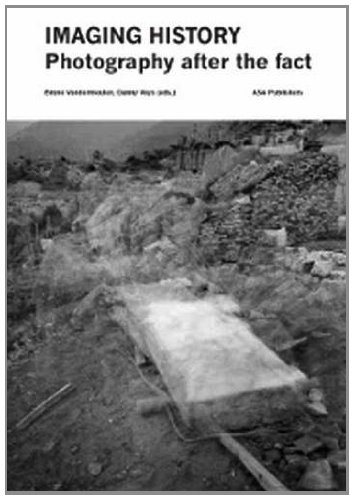Items related to Imaging History: Photography After the Fact

Synopsis
In archaeology, photography is mainly used as a technique for gathering data and evidence. Within the framework of the research project '(in)site, site-specific photography revisited' the relationship between photography and archaeology, or broader, history is explored. How do photographers visualize history? What is the importance of place, particularly the place that remains after the event took place? How do photographers or artists use photography to depict the past, when time has become 'past time'? These articles and portfolios explore, both on practical and theoretical level, how history can be captured.
The research project is an attempt to redefine the traditional relationship between archaeology and photography in order to produce new forms of image-making more adapted to contemporary visual culture. The project considers photography as a 'mode of engagement', i.e. a practice in which a picture is shaped and constructed by the photographer, not a practice in which a picture is mechanically taken. Thanks to this shift it becomes possible to take artistic input into account, for archaeological photography will be able to establish a dialogue with new forms of presentation and interpretation, and make them beneficial for both art and science.
With contributions by
Pool Andries - Leen Engelen - Giovanni Fragalą - Henrik Gustafsson - Iro Katsaridou - Anastasia Kontogiorgi - Bruno Notteboom - Benjamim Picado - Marjan Sterckx - Johan Swinnen - John Welchman - Helen Westgeest - And photographs by - Karin Borghouts - Carl De Keyser - Bart Michiels - Bruno Vandermeulen & Danny Veys
"synopsis" may belong to another edition of this title.
From the Back Cover
In archaeology, photography is mainly used as a technique for gathering data and evidence. Within the framework of the research project '(in)site, site-specific photography revisited' the relationship between photography and archaeology, or broader, history is explored. How do photographers visualize history? What is the importance of place, particularly the place that remains after the event took place? How do photographers or artists use photography to depict the past, when time has become 'past time'? These articles and portfolios explore, both on practical and theoretical level, how history can be captured.
The research project is an attempt to redefine the traditional relationship between archaeology and photography in order to produce new forms of image-making more adapted to contemporary visual culture. The project considers photography as a 'mode of engagement', i.e. a practice in which a picture is shaped and constructed by the photographer, not a practice in which a picture is mechanically taken. Thanks to this shift it becomes possible to take artistic input into account, for archaeological photography will be able to establish a dialogue with new forms of presentation and interpretation, and make them beneficial for both art and science.
With contributions by
Pool Andries - Leen Engelen - Giovanni Fragalą - Henrik Gustafsson - Iro Katsaridou - Anastasia Kontogiorgi - Bruno Notteboom - Benjamim Picado - Marjan Sterckx - Johan Swinnen - John Welchman - Helen Westgeest - And photographs by - Karin Borghouts - Carl De Keyser - Bart Michiels - Bruno Vandermeulen & Danny Veys
"About this title" may belong to another edition of this title.
(No Available Copies)
Search Books: Create a WantCan't find the book you're looking for? We'll keep searching for you. If one of our booksellers adds it to AbeBooks, we'll let you know!
Create a Want